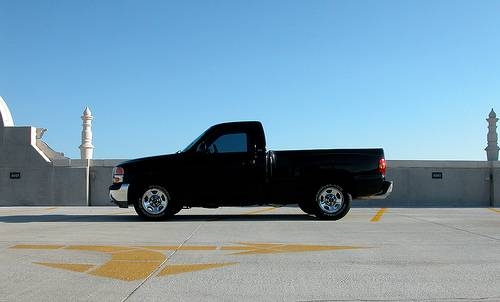
Air conditioning is an amenity that many of us need during the hot summer months. Without air conditioning, driving in heat is uncomfortable and unpleasant. Years of use can cause a number of problems for your truck's air conditioning system, each of which will have the result of weakening its cooling power and ultimately requiring you to troubleshoot the A/C system in your 1998 GMC 1500.
Turn on your truck and turn on the air conditioner. Then open the hood and look at the fan near the front of your engine compartment that blows air over your compressor. If this fan is off, it may cause your A/C to perform badly when your truck is not moving and will need replacing.
Touch the air conditioning system's low pressure line. This will be the larger line coming out of your truck's compressor. If this line is not very cold after you have left your A/C on for a few minutes, then the pressure in your lines may be too low.
Connect a set of A/C pressure gauges to your air conditioning system. This connects to the service ports that are clearly visible on both the low and high pressure lines of the truck's A/C system. Connect it to the low pressure side and take a reading. On a 70-degree day, the pressure for your GMC truck should be at 45 PSI. If the pressure is too low, the system needs more refrigerant. Your owner's manual will have more information on the recommended pressure of your system.
Turn off your A/C for a minute, and then have someone else turn it on as you stand over the engine and listen to the compressor. Have the person in the car turn on the A/C and listen for the compressor to start up; if it does not switch on, your compressor is broken and may need replacing.
Check to see if there are any leaks in the A/C hoses. You can do this by either purchasing a leak detection kit (which will color the refrigerant and provide you with a light that will help reveal where refrigerant is leaking from) or by rubbing soapy water on the pipes and checking to see if the water will bubble. If so, there is a leak and the hose will need to be replaced. This is most likely the problem if your system slowly gets warmer after you have refilled it with refrigerant.